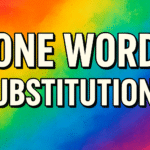Phrasal verbs are phrases that combine a verb with a preposition, an adverb, or both, to create a new meaning different from the original verb. They are widely used in English, especially in informal contexts, and can be idiomatic, making them tricky for non-native speakers. Below, I’ll explain what phrasal verbs are, their types, and provide examples with clear explanations.
What Are Phrasal Verbs?
A phrasal verb consists of:
- A main verb (e.g., “take,” “go,” “look”).
- One or more particles (prepositions or adverbs like “up,” “out,” “in,” “off”).
The combination often has a meaning that isn’t directly deducible from the individual words. For example, “give up” means to quit, not to give something upward.
Types of Phrasal Verbs
Phrasal verbs can be categorized based on their structure and usage:
- Transitive Phrasal Verbs: Require a direct object (something that receives the action).
- Example: Pick up (to collect or lift something).
- She picked up the book from the table. (The book is the object.)
- Example: Pick up (to collect or lift something).
- Intransitive Phrasal Verbs: Don’t need an object.
- Example: Show up (to arrive or appear).
- He showed up late to the party. (No object needed.)
- Example: Show up (to arrive or appear).
- Separable Phrasal Verbs: The verb and particle can be separated by the object.
- Example: Turn off (to stop a device).
- Turn off the light or Turn the light off. (Both are correct.)
- Note: If the object is a pronoun, it must go between the verb and particle: Turn it off. (Not Turn off it.)
- Example: Turn off (to stop a device).
- Inseparable Phrasal Verbs: The verb and particle must stay together.
- Example: Look after (to care for someone/something).
- She looks after her younger brother. (Not She looks her younger brother after.)
- Example: Look after (to care for someone/something).
- Three-Word Phrasal Verbs: Include a verb + two particles.
- Example: Look forward to (to be excited about something).
- I look forward to meeting you. (The verb and particles are inseparable.)
- Example: Look forward to (to be excited about something).
Common Phrasal Verbs with Examples
Here’s a list of common phrasal verbs, grouped by meaning, with examples to illustrate their usage:
1. Movement or Travel
- Set off: To begin a journey.
- We set off for Paris at dawn.
- Drop off: To leave someone/something at a place.
- Can you drop me off at the station?
- Pick up: To collect someone/something.
- I’ll pick you up at 7 p.m.
2. Stopping or Ending
- Give up: To quit or stop trying.
- She gave up smoking last year.
- Break down: To stop functioning (e.g., a machine) or to lose control emotionally.
- The car broke down on the highway.
- He broke down in tears after the news.
- Turn off: To stop a device or process.
- Please turn off the TV before bed.
3. Social and Communication
- Get along with: To have a good relationship with someone.
- I get along with my coworkers really well.
- Speak up: To talk louder or express an opinion openly.
- Can you speak up? I can’t hear you.
- Catch up: To talk and share updates with someone you haven’t seen in a while.
- Let’s grab coffee to catch up.
4. Work and Daily Activities
- Look into: To investigate or examine.
- The manager will look into the complaint.
- Run out of: To use up a supply of something.
- We ran out of milk this morning.
- Put off: To postpone or delay.
- They put off the meeting until next week.
5. Emotions and Relationships
- Cheer up: To make someone feel happier.
- I brought her flowers to cheer her up.
- Fall out: To have an argument and stop being friendly.
- They fell out over a silly misunderstanding.
- Make up: To reconcile after an argument.
- They made up after their fight.
Key Features of Phrasal Verbs
- Multiple Meanings: Some phrasal verbs have more than one meaning depending on context.
- Example: Make up
- To reconcile: They made up after the argument.
- To invent: She made up a story for the kids.
- To apply cosmetics: She made up her face for the party.
- Example: Make up
- Context Matters: The meaning often depends on how the verb is used in a sentence, so memorizing them with examples is key.
- Informal Tone: Phrasal verbs are more common in spoken or informal English. In formal writing, single-word synonyms (e.g., “investigate” instead of “look into”) are often preferred.
Tips for Learning Phrasal Verbs
- Learn in Context: Memorize phrasal verbs with example sentences to understand their meanings.
- Group by Verb or Particle: Study phrasal verbs with the same verb (e.g., “take off,” “take up,” “take over”) or particle (e.g., “get up,” “stand up,” “speak up”).
- Practice Regularly: Use them in conversation or writing to reinforce memory.
- Pay Attention to Separability: Note whether the phrasal verb is separable or inseparable to avoid grammatical errors.
Additional Examples for Practice
- Bring up: To mention or raise a topic.
- She brought up the issue during the meeting.
- Hang out: To spend time casually with someone.
- We hung out at the mall yesterday.
- Run into: To meet someone unexpectedly.
- I ran into an old friend at the store.






